Why the victory parade of 1945 to the mausoleum threw the Kaiser's flags
Categories: History | Society | World
By Pictolic https://pictolic.com/article/why-the-victory-parade-of-1945-to-the-mausoleum-threw-the-kaisers-flags.htmlThe culmination of the first Victory Parade June 24, 1945 was the moment when the Nazi banners were thrown to the foot of the Lenin mausoleum. The deposition of the German flags was deliberately carried out with gloves in order to emphasize the aversion to the broken enemy. Among these standards were the old Imperial flags. Why they shared the fate of the banners of the Wehrmacht — in this article, "Military Review".
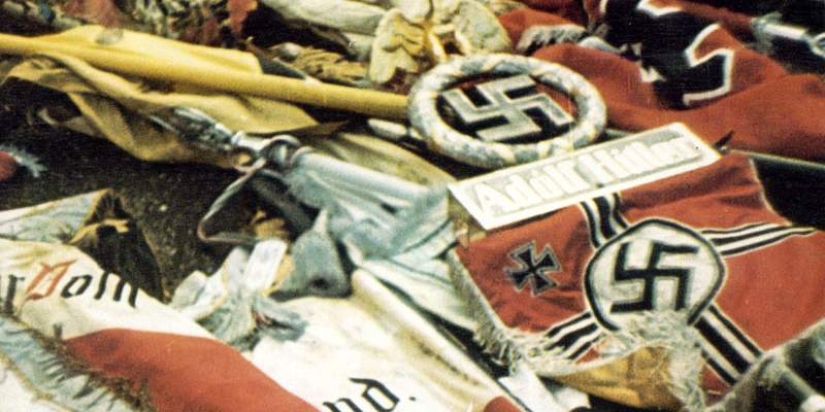
In 1914 the Imperial German army entered the First world war under the shadow of 1214 regimental banners and 126 of the standards. During the war it lost 76 regimental flags and five banners, and on 21 November 1918 in the town of Posen, the Germans burned 61 banner and standard, to avoid their capture by the poles.
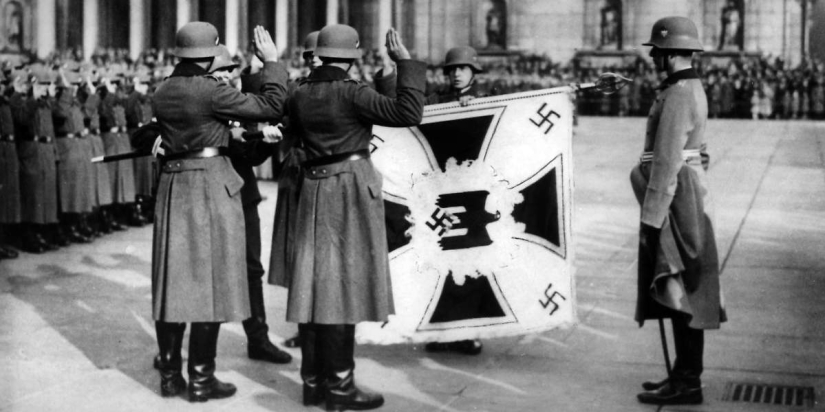
In the years of the Weimar Republic, the German army had not received new banners. In 1933 to power in Germany came Adolf Hitler, who restored to the German conscription army — Wehrmacht.
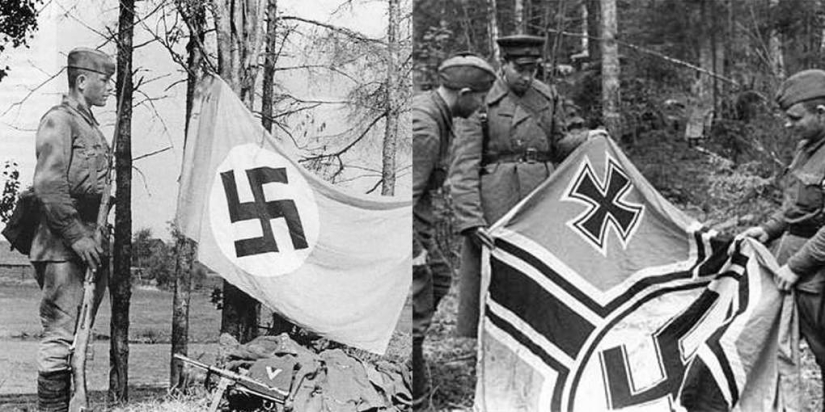
The sixteenth of March, 1936, Hitler issued a decree according to which parts of the generated Wehrmacht had to get new flags. The Fuhrer declared that the glory of the Imperial army of Germany was lost after the conclusion of the shameful Treaty of Versailles, so the new army of the Third Reich should have their own symbols.
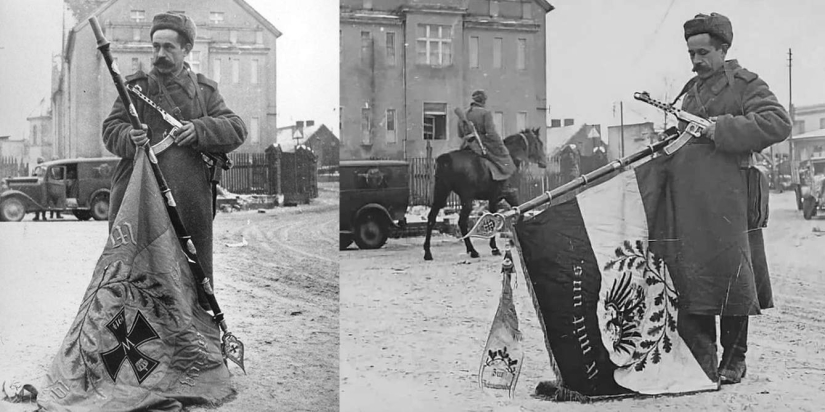
According to the rules adopted in the Wehrmacht, battalion banner all the time kept at headquarters. But it has been established ten "banner" days, when on the occasion of the national holiday of Germany, the symbol part in a solemn ceremony could be imposed on the public. In addition, the battalion banner was used for the swearing in of the recruits.
Unlike the banners of the Kaiser's parts, differing from each other symbols, flowers, and heraldic signs, flags of the Wehrmacht was strictly standardized. They had a set design and size and differed only in colors, showing the parts belonging to one or another of the armed forces.
In addition to the banners and standards of German troops had a set of flags that bore a purely technical function. They were used for recognition on the battlefield, rising from the busy parts of the Wehrmacht buildings etc., Usually in the hands of the enemies of Germany were these flags.
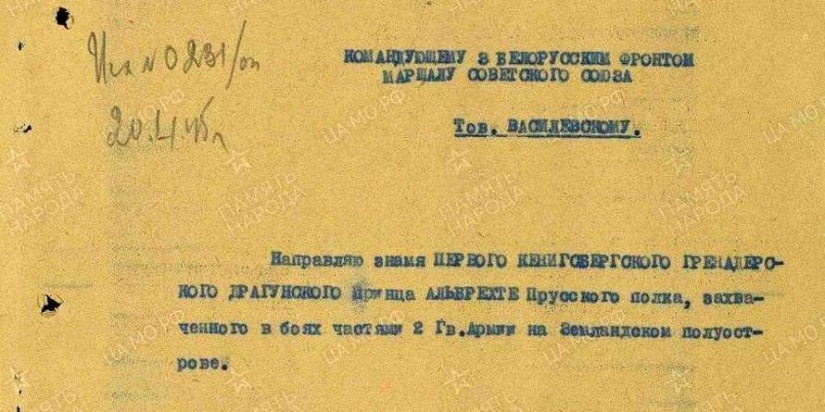
The twenty-eighth of August 1944, Hitler gave the so-called order of the flags. Under this order, all the battalion flags of the Wehrmacht were withdrawn from the units and deposited in museums in the arsenals of Germany. Part received standard German military flag that was used as a replacement banner.
The reasons for the bestowal of this order was not clear, it is assumed that the removal of the banners of the parts occurred due to the increased threat of their capture by the enemy. Either in disbelief of the Fuehrer to the Wehrmacht after the attempt on his life on 20 July 1944.

After the war, Moscow has delivered around 900 trophy banners, among which was that of the Kaiser's flags. The special Committee selected 200 banners that were supposed to take part in the Victory Parade.
Former chief of staff, General Sergei Shtemenko in his memoirs, said that it was the decision of Stalin. In late may 1945, he instructed the generals: "the Parade must be put up Nazi flags and a shame to throw them at the feet of the winners. Think about how to do it."
Among the selected flags turned 20 the Kaiser's banners. Probably the members of the Commission did not know about Hitler's decision to interrupt the continuity of the Wehrmacht from the Imperial army, and these banners have been selected for their outstanding appearance.
After the Victory Parade German flags passed to storage in the Central Museum of the red army.
Keywords: Germany | Victory parade | Facts | Flags
Post News ArticleRecent articles

We present you a selection of amazing beaches — but today these are not standard holiday destinations, but really unusual places. ...

Aerial photographer cronista johnny Miller demonstrate dramatically the gap between rich and poor in cities of South Africa, Mexico ...
Related articles

The sun is shining, the birds are chirping, life is beautiful and amazing! Usually when the word «nature» the head is ...

Here you are only 5 years old. Kindergarten. It's already 15. First love. Until recently, you graduated from the institute, and ...

For all lovers of fairy tales and beautiful views of our planet, the German photographer Kilian Schonberger has created a series of ...

On April 22, 1923, Bettie Page was born in Nashville, who became a sex symbol throughout the country in the middle of the century. ...